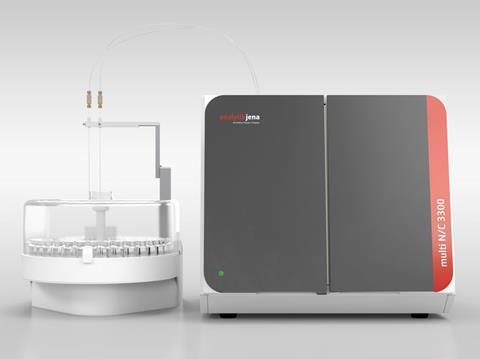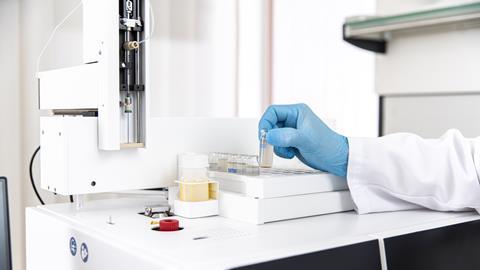Environmental authorities and dischargers worldwide are increasingly changing from chemical oxygen demand (COD) to total organic carbon (TOC) analysis. While the more convenient workflow and lower long-term operating costs may be the reason for many laboratories to switch, others are following regulations in environmental analysis. Analytik Jenas multi N/C x300 series analyzers are time-tested, offering excellent particle handling and a compliant and worry-free analysis experience.
Cellulose test for TOC analyzers
DIN EN 1484 and DIN EN ISO 20236 define TOC as the sum of the totally bound carbon present in the water carbon, both in dissolved and particle-bound form. In wastewater monitoring, the dissolved organic carbon (DOC) as well as the particle-bound fraction must be analyzed, and TOC/TNb analyzers used must demonstrate that they ensure the complete transfer and oxidation of a representative aliquot of the particulate sample. For this, the DIN EN ISO 20236 standard prescribes the cellulose test. The test shows the recovery and repeatability of a cellulose suspension with a particle size of up to 100 μm at a TOC concentration of 100 mg/L.
The devices of the multi N/C x300 series of Analytik Jena score excellently with recovery rates above 94 % and RSDs below 0.5 %. The decisive factor for these good results is their excellent particle mobility. The direct injection devices multi N/C 2300 with an aspiration needle of 0.7 mm diameter inject samples from top to bottom and ensure an ultra-short sample path. The loop injection systems dispense directly from the injection loop and feature large inner diameters of 0.8 mm and an integrated backwash function. The high oven temperatures up to 950 °C ensure 100 percent sample oxidation.
Besides their excellent particle handling, multi N/C x300 analyzers offer a variety of features enabling precise analysis and efficient lab work such as a wide working range from 4 µg/L to 30,000 mg/L of undiluted sample, calibration stability for up to one year and user-friendly low maintenance design. Their low cost of ownership compared to COD-devices are calculated in a free business case.
Switching from COD/BOD5 to TOC: An Environmental and a Business Case - Analytik Jena
















